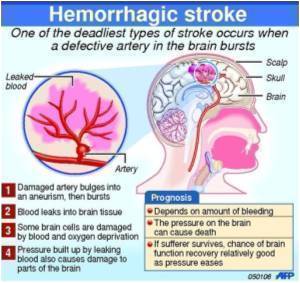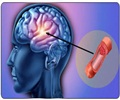A study published online today in the European Heart Journal says that there is growing inequality between different countries in the proportion of people who die from stroke.

The authors of this multi-national study say that, as previous research has shown a strong correlation between the prevalence of high blood pressure and deaths from stroke, their findings given an indication of how well blood pressure is controlled in different countries.
"Stroke mortality reflects the status of hypertension in the different regions of Europe. Monitoring changes over time can be extremely useful to watch the status of hypertension, the most important cardiovascular risk factor," said Professor Josep Redon, the first author of the paper and scientific director of the Research Institute (INCLIVA) at the University of Valencia, Spain.
Stroke is a major public health problem; it is the third most common cause of death after heart attacks and cancer; it is responsible for 3% of adult disability; and, because of the progressive ageing of the population and the increasing prevalence of major risk factors for stroke such as high blood pressure, diabetes and obesity, the rate of stroke is predicted to double by 2020. The study's authors say this underlines the importance of controlling the risk factors responsible for the majority of strokes, "above all hypertension".
Prof Redon and his colleagues from Spain, Denmark, USA, France, Czech Republic and Italy, analysed stroke data from the World Health Organization (WHO) for 35 countries between 1990 and 2006. The countries were grouped according to WHO classifications into three demographic categories: group A, countries with very low child (under five years) and adult (15-59 years) mortality; group B, countries with low child and adult mortality; group C, countries with low child and high adult mortality.
The researchers looked at the number of deaths from stroke in 2002, and they also analysed trends in these countries between 1999 and 2006.
Advertisement
When the researchers examined the trends over time, they found that in group A, deaths from stroke decreased sharply from 1990 to 2006 by approximately 40 per 100,000 of the population. In contrast, death rates increased by about 35-40 per 100,000 in group B, and by about 20 per 100,000 in group C.
Advertisement
They continue: "If we assume that stroke mortality can serve as a proxy for average BP [blood pressure] in a population, the data presented here clearly demonstrate the necessity to adopt actions to increase the diagnosis, treatment and hypertension control in the countries where the burden of hypertension sequelae is still growing. Policies to increase the rate of BP control offer the best approach, while primary prevention strategies must also be implemented."
Prof Redon concluded: "We hope that this paper will be a call to action in the face of the huge impact of stroke all over Europe."
Source-Eurekalert














